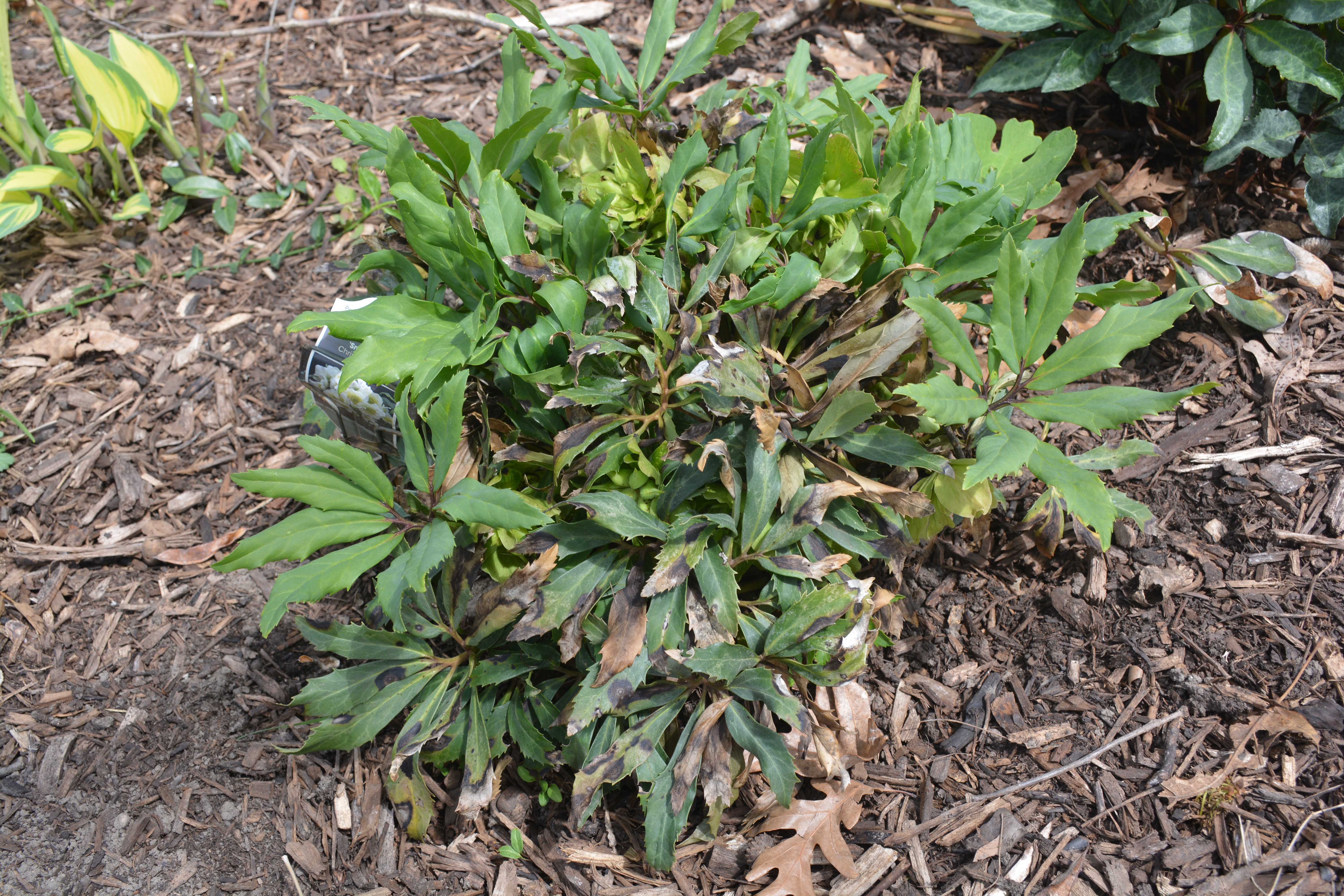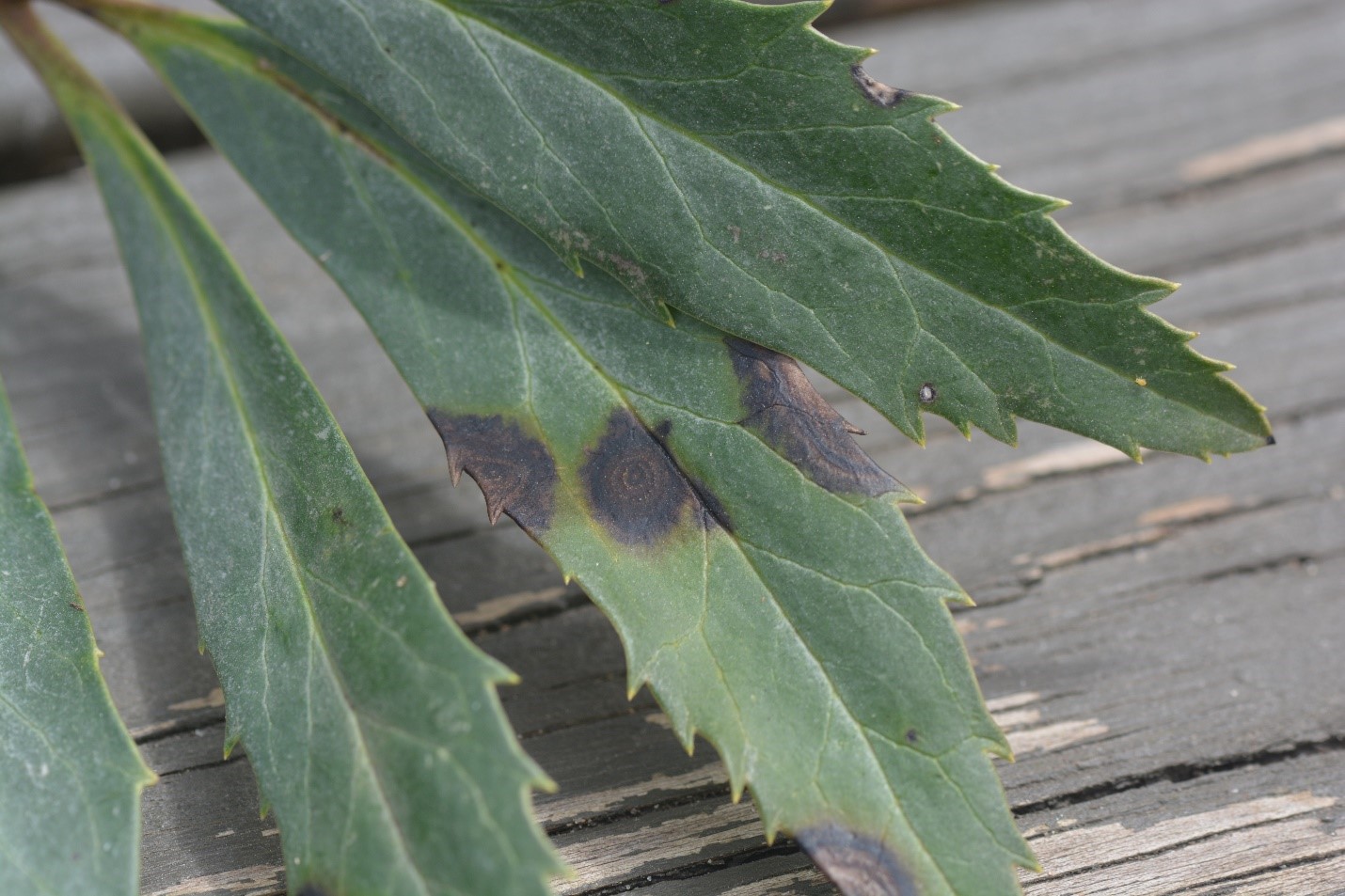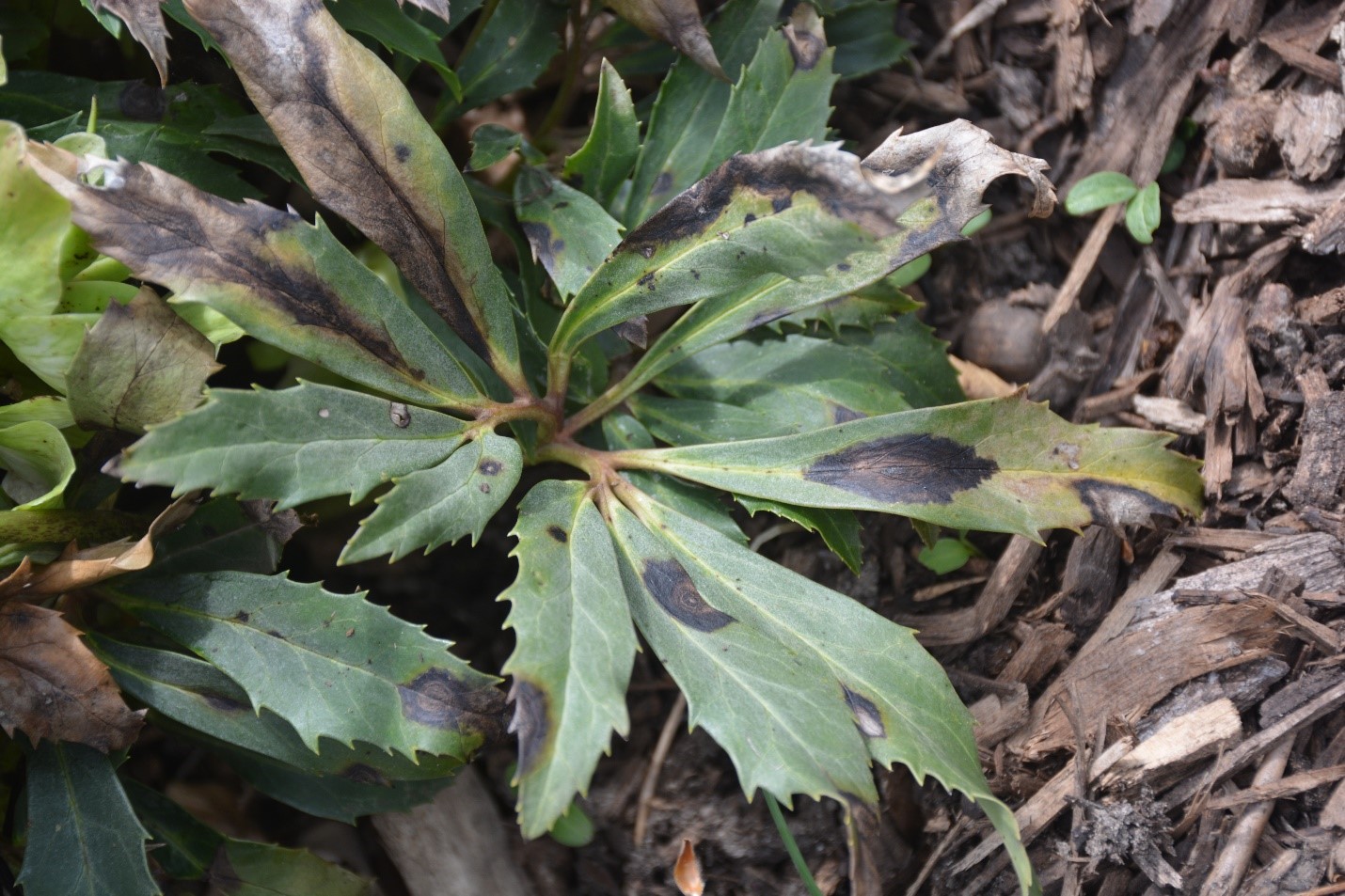Issue 2, May 12, 2022
Hellebore Black Spot
You had me at Helleborus! Hellebores make wonderful additions to woodland gardens or landscapes with partial shade. I have had success growing them in a sloped flower bed mixed with hostas, coral bells, and hydrangeas. Their colorful blooms are one of my favorite signs that winter is giving way to spring.
My hellebores have been relatively low maintenance thus far. Their evergreen leaves are prone to winter injury from cold temperatures and desiccating winds. I simply prune out the tattered, brown leaves before the new leaves emerge. This spring, I noticed that one of my hellebore plants had leaf spots in addition to the typical winter injury. Upon further inspection, I found the culprit to be black spot, a fungal disease caused by Microsphaeropsis hellebori (formerly Coniothyrium hellebori). This disease infects many Helleborus spp; Christmas rose(Helleborus niger) is a common host.

Black spot on Helleborus ‘Snowbells,’ Travis Cleveland, University of Illinois.
Symptoms
Black spot causes large, dark brown to black spots on hellebore leaf blades and margins. The spots have concentric rings giving them a target-like appearance. As the spots enlarge, they develop an elliptical shape. Multiple spots can coalesce and damage large portions of the leaf. Small, black fruiting bodies (pycnidia) form within the disease tissues; you will likely need a hand lens to see them. Black spot also infects flowers. Many of the flower buds on my plant wilted, rotted, and failed to open.

Black spot lesions on Helleborus ‘Snowbells,’ Travis Cleveland, University of Illinois.

Hellebore leaf severely infected with black spot (Microsphaeropsis hellebori), Travis Cleveland, University of Illinois.
Disease Management
The pathogen that causes black spot of hellebore produces abundant spores that spread mainly by splashing water and wind-blown rain. The disease spreads rapidly during wet springs or falls. The most effective management option is to remove and destroy the infected leaves. Be sure to clean/sanitize your pruners between plants to avoid spreading the disease. When watering, avoid overhead irrigation that keeps foliage wet for extended periods. I could not find any fungicides labeled for Helleborus spp. or hellebore black spot. Many fungicide labels list "black spot," which refers to black spot of rose caused by a different fungal pathogen. Please let me know if you come across any products labeled for Helleborus spp.
Author:
Travis Cleveland